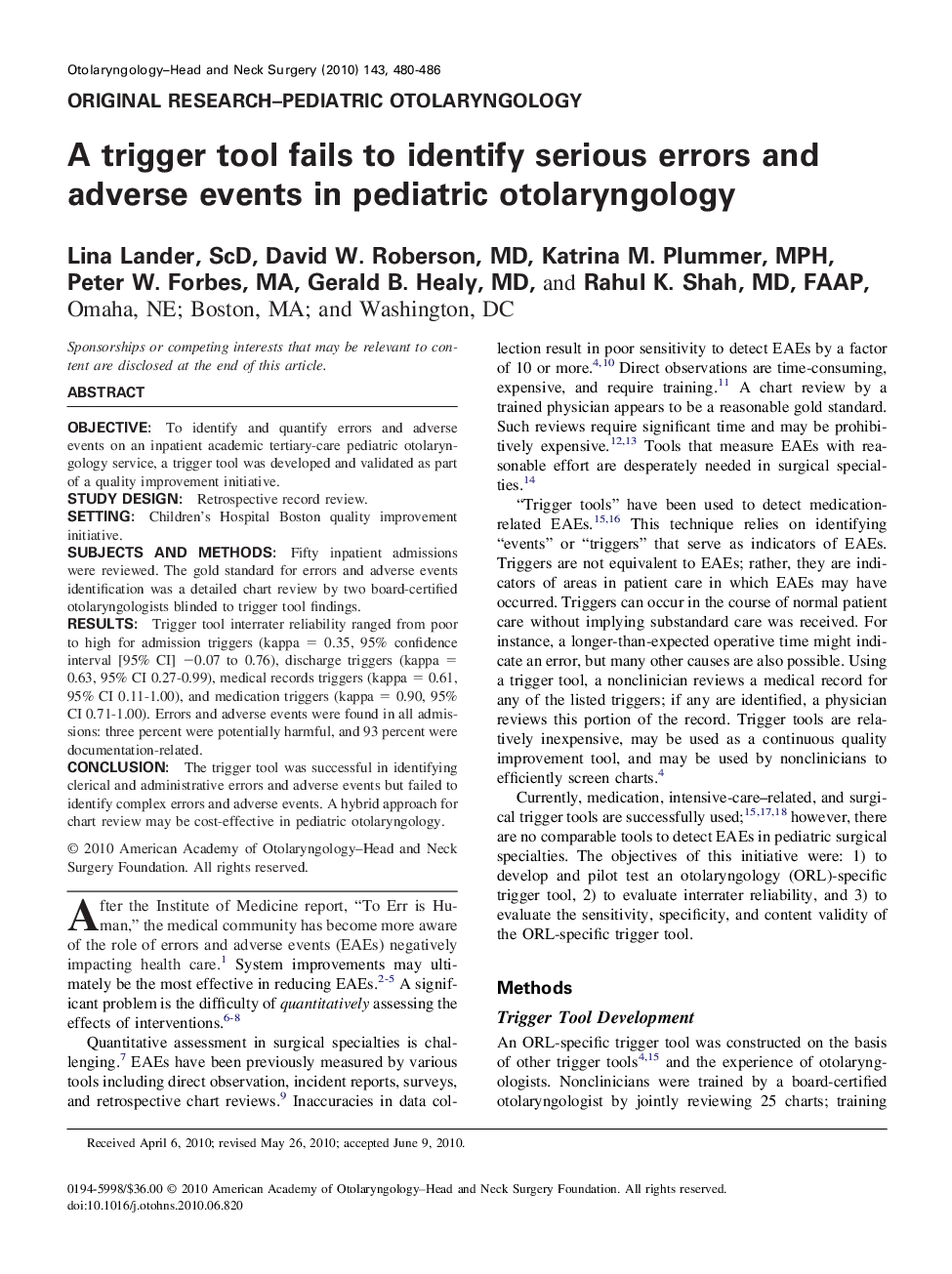| Article ID | Journal | Published Year | Pages | File Type |
|---|---|---|---|---|
| 4124789 | Otolaryngology - Head and Neck Surgery | 2010 | 7 Pages |
ObjectiveTo identify and quantify errors and adverse events on an inpatient academic tertiary-care pediatric otolaryngology service, a trigger tool was developed and validated as part of a quality improvement initiative.Study DesignRetrospective record review.SettingChildren's Hospital Boston quality improvement initiative.Subjects and MethodsFifty inpatient admissions were reviewed. The gold standard for errors and adverse events identification was a detailed chart review by two board-certified otolaryngologists blinded to trigger tool findings.ResultsTrigger tool interrater reliability ranged from poor to high for admission triggers (kappa = 0.35, 95% confidence interval [95% CI] −0.07 to 0.76), discharge triggers (kappa = 0.63, 95% CI 0.27-0.99), medical records triggers (kappa = 0.61, 95% CI 0.11-1.00), and medication triggers (kappa = 0.90, 95% CI 0.71-1.00). Errors and adverse events were found in all admissions: three percent were potentially harmful, and 93 percent were documentation-related.ConclusionThe trigger tool was successful in identifying clerical and administrative errors and adverse events but failed to identify complex errors and adverse events. A hybrid approach for chart review may be cost-effective in pediatric otolaryngology.
